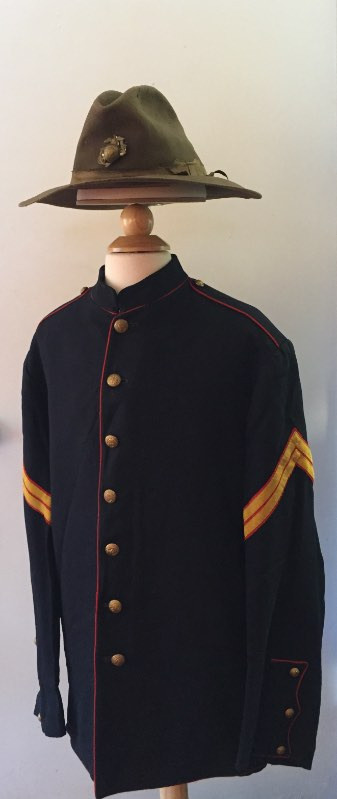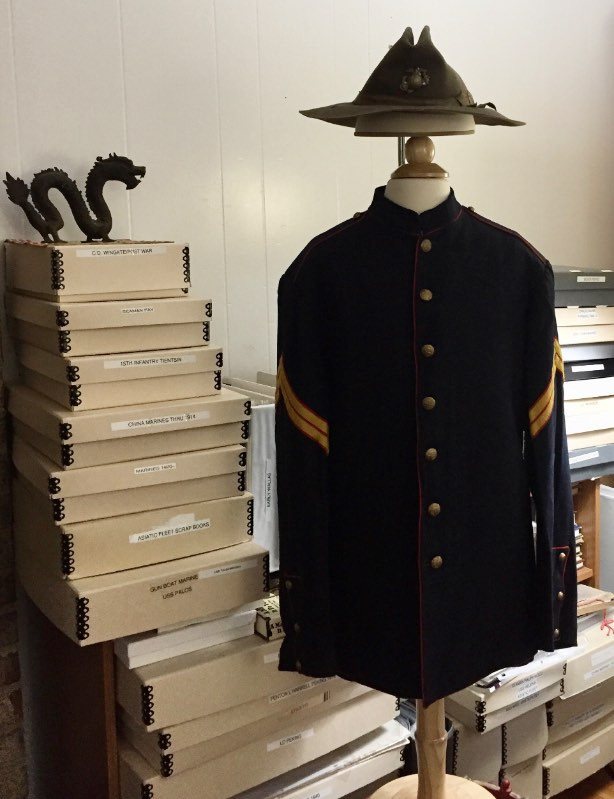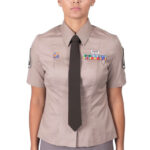Delving into the history of early 20th-century military attire, specifically around the Boxer Rebellion period, reveals fascinating details about the evolution of the U.S. Marine Corps uniform. While the term “Boxer Uniform” might broadly evoke images of military dress from this era, a closer look at campaign hats and undress service coats provides a more nuanced understanding of what Marines actually wore. This exploration focuses on a specific undress service coat and a campaign hat, examining their historical context and construction.
Research into the campaign hat, particularly its usage by Marines between 1898 and 1901, suggests a period of diverse styles. Discussions with Marine Corps Museum curators indicate that various models were in circulation, differing in vent styles (star, snowflake, metal, or no vent), rim edges, and the presence of chin straps. Adding to this complexity, historical documents point to variations in hat colors even within the same period. While regulations from 1900 alluded to a standard model at the Quartermasters Office, its precise features remain unclear. It is known, however, that the star-vented hat with a folded rim edge and chin strap became the standardized Marine campaign hat by 1902, as evidenced by photographic records.
 Close-up of an early 20th-century campaign hat showcasing star vent detail and chin strap.
Close-up of an early 20th-century campaign hat showcasing star vent detail and chin strap.
Further investigation into manufacturer contracts reveals more about these early uniforms. Archival discoveries highlight a contract awarded to Ferry & Napier of New York in April 1900 for campaign hats. Interestingly, questions arose within the Marine Quartermaster regarding the contract validity due to the agent’s name appearing on the bid instead of the manufacturer. Ultimately, the Navy’s Judge Advocate ruled in favor of Ferry & Napier, provided the Marines were confident in their ability to fulfill the order. Whether this contract was completed and if examples of these hats still exist for study remains a subject for ongoing research, potentially offering more insights into “boxer uniform” components.
 Full view of an undress service coat paired with a campaign hat, representing early Marine Corps uniform.
Full view of an undress service coat paired with a campaign hat, representing early Marine Corps uniform.
Despite the ongoing questions surrounding the campaign hat contracts, the presented undress service coat offers a tangible piece of Marine Corps history from this period, often associated with the broader “boxer uniform” era. Finding an undress service coat worn by a Marine who participated in campaigns of the time and pairing it with a campaign hat that fits the historical context provides a valuable representation of early Marine field dress.
 Detailed shot of the undress service coat fabric and buttons, highlighting the material and construction of early military garments.
Detailed shot of the undress service coat fabric and buttons, highlighting the material and construction of early military garments.
Ultimately, researching these early uniform items, even without definitive answers to every question, enriches our understanding of the material culture of the U.S. Marine Corps during a pivotal period in its history, broadly encompassed by the interest in “boxer uniform” studies.


